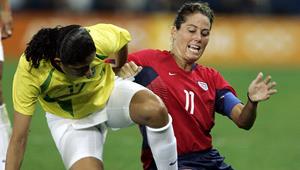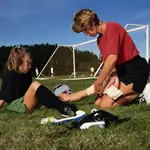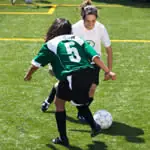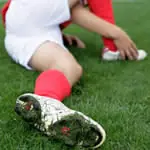
Burnout in youth sports is a threat to the physical and mental stamina of young athletes. As competitive youth sports engage younger participants each year, the threat of both physical and mental burnout in young players grows more imminent.
Over-involvement in competitive leagues has long-term consequences for kids, if after the first 12 years of their lives they abandon organized sports or physical activity completely. This alarming situation is compounded by the growing competition between youth sports and modern technology, which is driving youngsters to become sedentary, often in the form of sitting in front of a computer for hours at a time.
Unfortunately, once young victims of burnout quit sports, they rarely return. This startling predicament of modern youth sports can be attributed to the actions of parents and coaches.
Parents who enroll their children in too many sports or multiple leagues for one sport end up constructing a trap that will inevitably catch up with their kid. These children are often bound by impractical time constraints, almost literally living out of their family vehicles in order to accommodate their hectic schedules. Parents must find a reasonable balance for their children and help budget their time.
Youth coaches can also share the blame for the dilemma. Coaches who allow their practices to become drudgery can get feelings of resentment from their players. Conducting short, stimulating, fun practices that convey skills in the form of spirited activity can turn practices into a positive experience for young players. If players leave practice, unmotivated to show up at the next one, something is amiss.
While burnouts result from participation in too many sports, as well as enrollment in too many leagues for a single sport, the latter scenario may pose greater danger for the player. Having a child play in numerous leagues in order to specialize their talents often leads to physical harm. Using the same muscles over and over again without varied activity can introduce problems with the child's growth platelets. This kind of damage can persist into long-term health issues.
Consider a 12-year old youth baseball player who is involved in two leagues and is a pitcher. Suppose the pitch count slips away from an attentive coach or parent, or the coach sneaks in a few extra innings for a game that "the team needs." If this realistic scenario repeats itself enough, the perfect formula is created for serious arm injury.
It is not difficult for parents to overlook this outcome when they are blinded by their personal motivations. Perhaps the parent is looking to vicariously relive their childhood. Hopes of a college scholarship seven years down the road could also drive a parent down this dangerous path.
So what is the correct formula? Unfortunately, there is no single answer to this question. All kids are different and some are more physically resilient than others. Parents need to prioritize their children's physical and mental well-being over their own emotional and monetary incentives. A lifestyle that emphasizes a balance between school, extracurriculars, and free time, is probably the best thing for all kids in the long run.
And if you, as parents, or your kids who participate in youth sports leagues always seem tired, maybe this is an indicator to slow down. Remember, kids also need some free time away from organized sports to be creative in their backyards or the schoolyard.
The burnout factor is something parents and communities need to pay attention to. Competition is great, but the overindulgence might be doing more harm than good.
 See more soccer tips for kids or find a youth soccer leagues near you.
See more soccer tips for kids or find a youth soccer leagues near you.
Marty Schupak, President of the Youth Sports Club, has coached youth sports for 21 years and has run more than 1,500 youth sports practices. He is the creator of 22 sports instructional videos including the best selling "Championship Soccer Drills," "The 59 Minute Baseball Practice" and "48 Championship Basketball Drills." He is also author of the popular book, "Youth Baseball Drills." For samples of his videos, go to VideosForCoaches.com








Discuss This Article